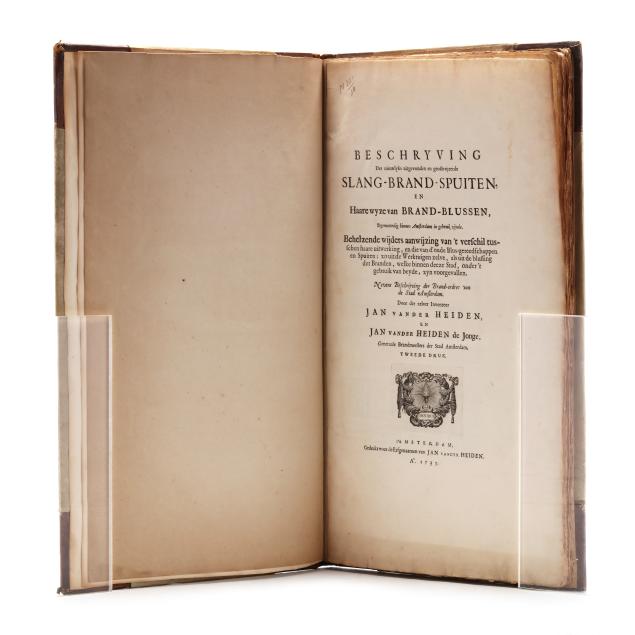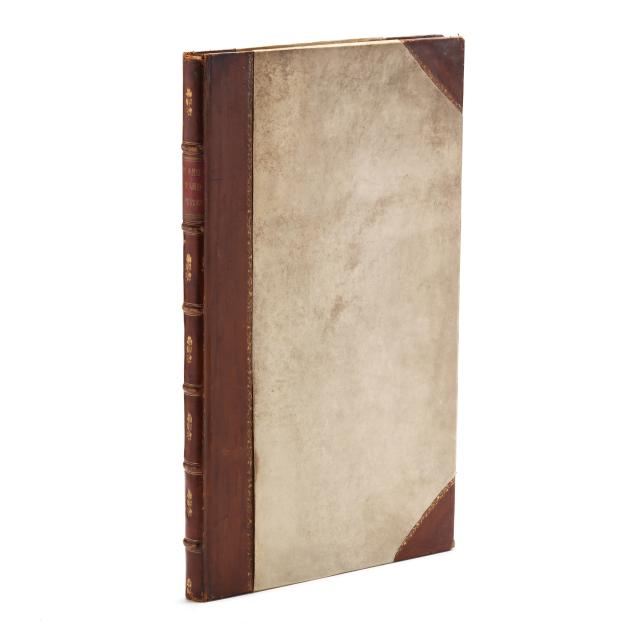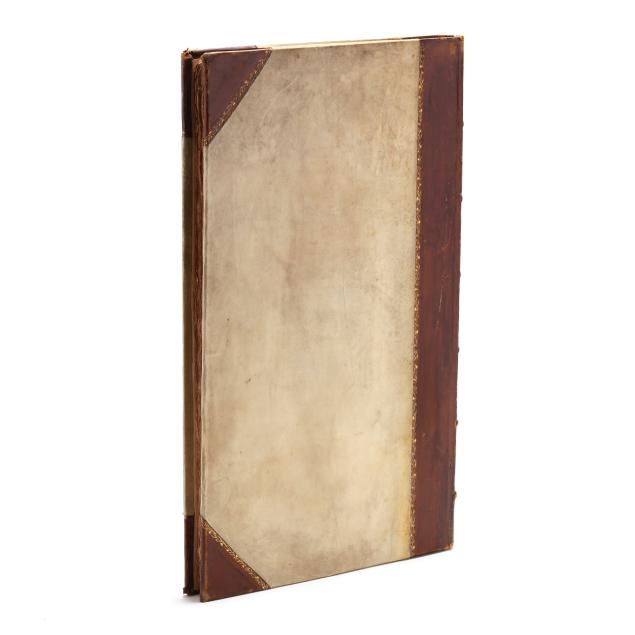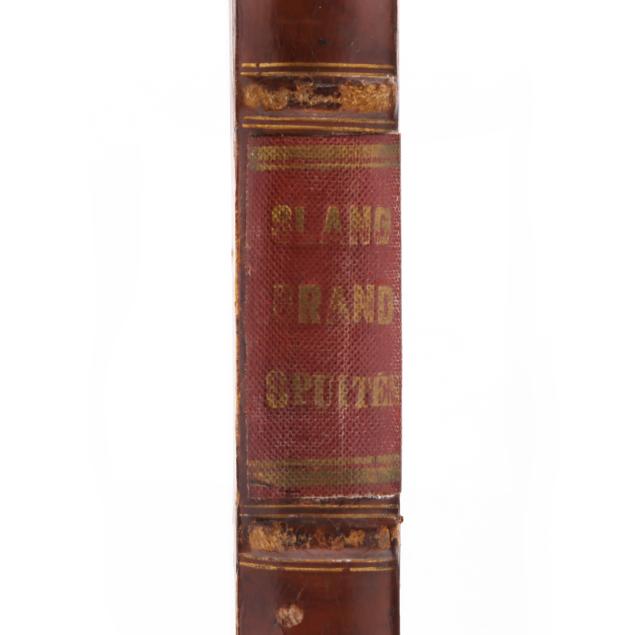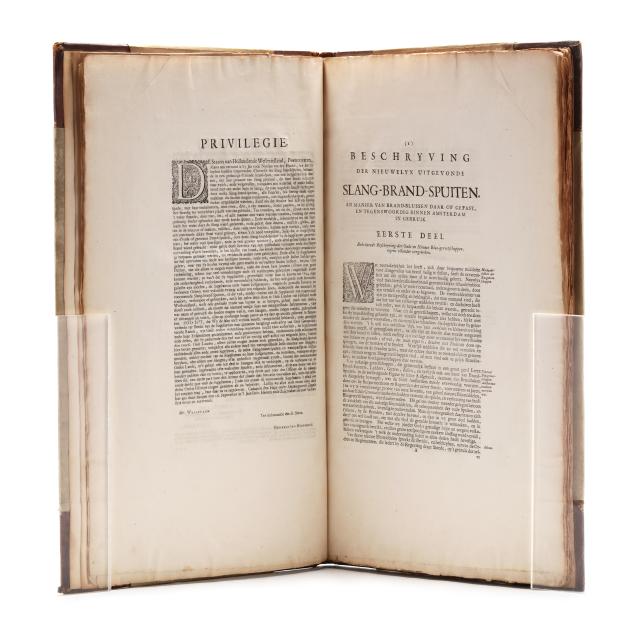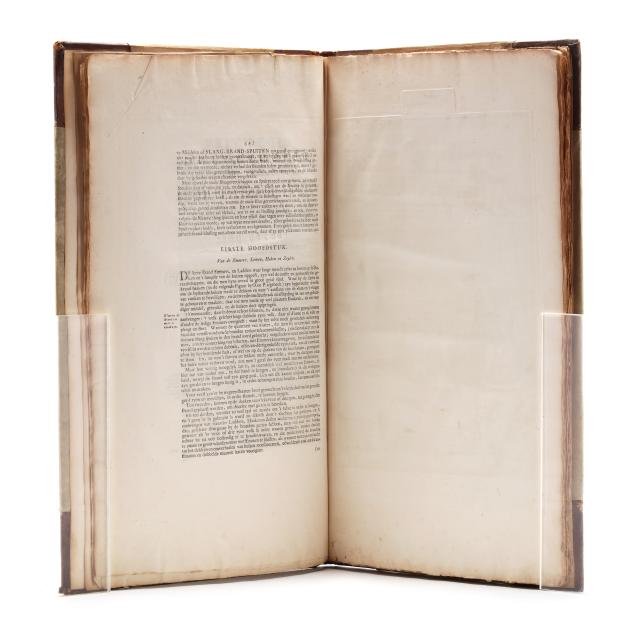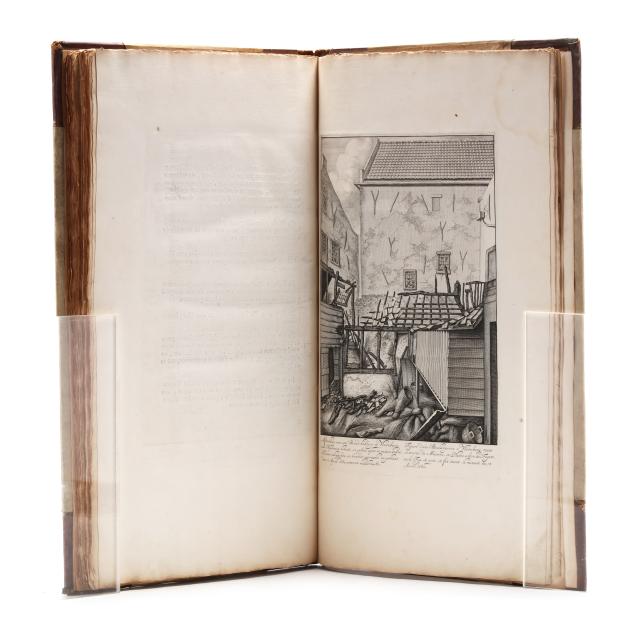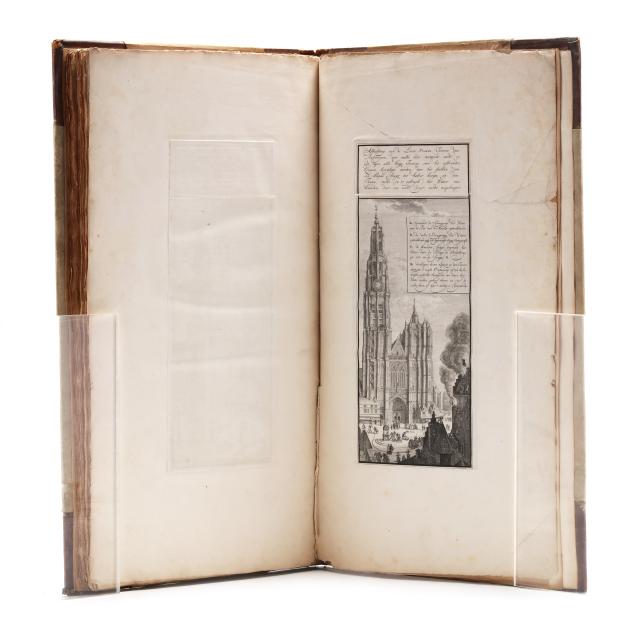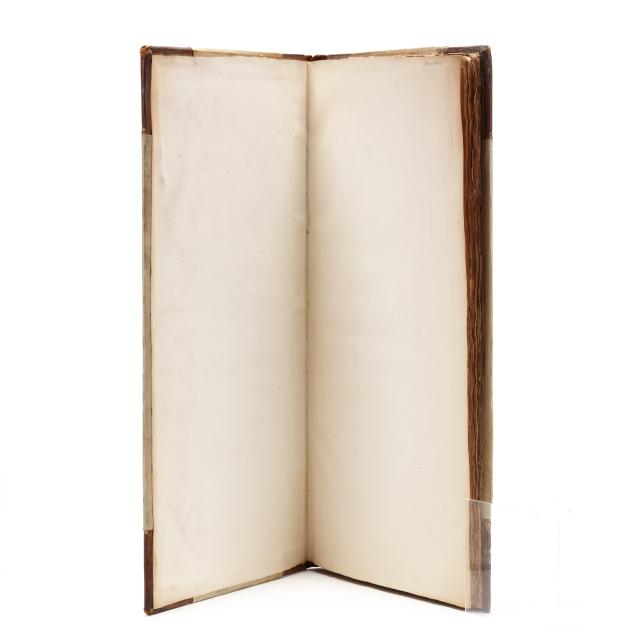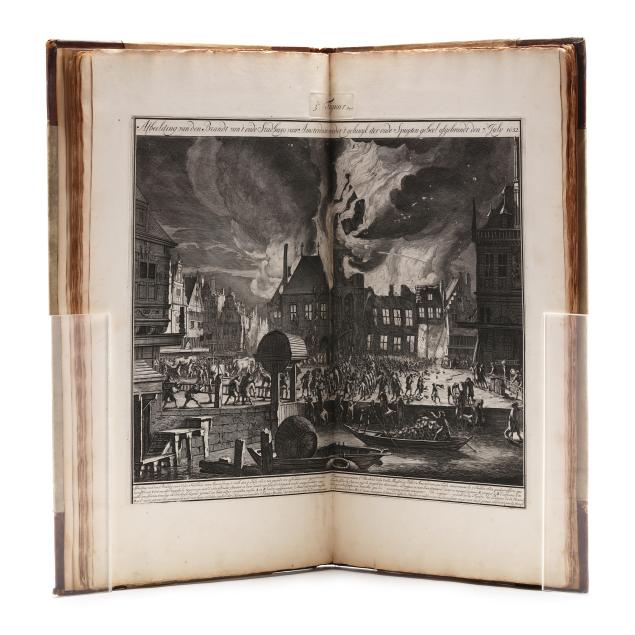
Lot 5088
Second Edition of Jan van der Heyden's Illustrated Firefighting Manual, Complete with Additional Plates
Explore more items like this one.
Visit our Historical Department Historical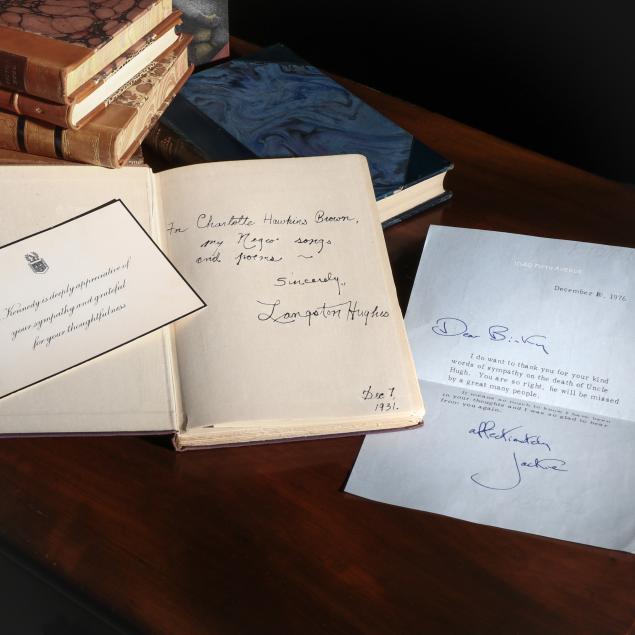
Lot Details & Additional Photographs
19 13/16 x 12 1/8 in.
Private North Carolina Collection
Jan van der Heyden (Dutch, 1637-1712) was a successful Baroque artist and inventor best known for his paintings of towns, for establishing a much-needed new street lighting system in Amsterdam using oil-burning lamps, and for creating the first firefighting manual. Witnessing a major fire in Amsterdam as a young man likely had a major impact on him, and it later inspired him to make firefighting more efficient. His contributions to the profession include reorganizing the city's fire department, working with his brother to invent a type of fire engine with fire hoses to replace the simple leather buckets used previously, and with help from his son, publishing a manual on the use of the fire hose. While the book was first published in 1690, this second edition was updated with (6) additional plates to reflect the latest firefighting methods used in Amsterdam.
A well-bound and sturdy volume; vellum with slight separation from upper board and typical discoloration, boards with scuffs and scratches, corners rubbed and bumped; spine rubbed at tail and raised bands, and with chips to leather at head, joints creased; interior lightly toned with toning darker at edges, some leaves lightly frayed with closed tears and small edge chips, frequent light grime, wide margins with creases, occasional glue residue and offsetting, and light scattered foxing; scuffing to paste-downs and writing on corner of first free endpaper, title page extended, one page with small ink mark on text, many plates with 1 1/4-in. or smaller tears not impacting images, several leaves and plates with a very small wormhole or worm trail, (2) plates with a tiny hole, damp staining mostly concentrated in top right corner of additional (6) plates, and final plate with (2) large tears not impacting image with one repaired on verso; a very good and complete copy.
